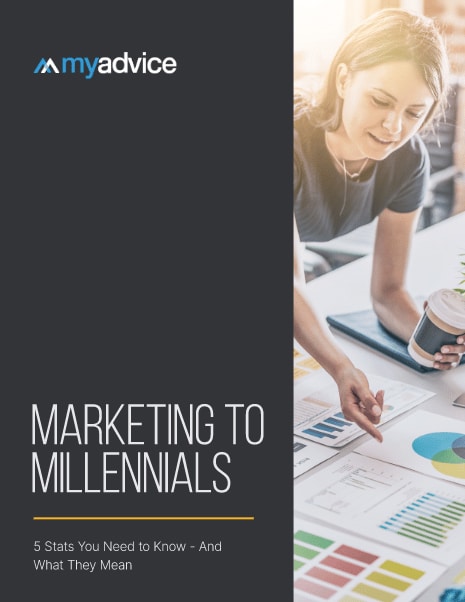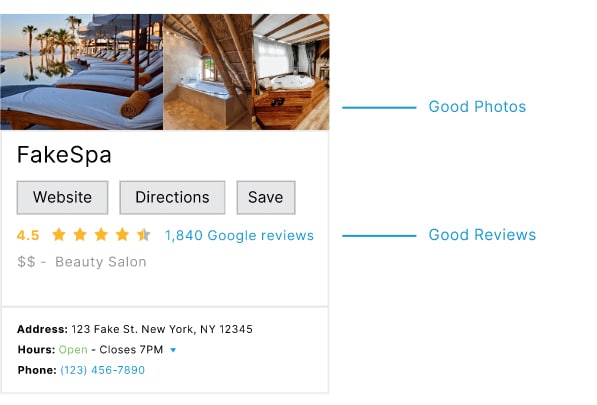
Download Your Free Guide Now
We asked business owners and marketers to tell us which generations they are trying to reach in their marketing strategies. The top answer was millennials, so we’re starting there first. We’ve compiled some of the best generational research to tell you how these statistics should impact your marketing strategy. If you’re looking to market to millennials more effectively, you’ve come to the right place.
Before we start, let’s define the millennial generation. There are a lot of different opinions on this, but for the purposes of this guide, we’re classifying millennials as the generation born between 1980 and 1997.
Millennials have serious buying power.
Though millennials make up only 25% of the US population, they have huge purchasing power. They make up 21% of consumer discretionary purchases, which means nearly a trillion dollars in direct purchasing power. These numbers are likely to continue to grow over time.
What it means: Millennials are trendsetters, and they’re worth paying attention to.
Because they grew up right during the advent of the digital age, members of this generation are comfortable with changing technology, even as they continue to get older. They also have considerable influence over older generations, who look to them for opinions about up and coming technology, as well as how to best utilize current technology.
More than 90% of millennials own smartphones.
The millennial generation grew up adopting new technology as it was released. That means millennials are very comfortable adopting new technology and adapting to new devices.
What it means: Your website HAS to be mobile-friendly.
Your website probably already has mobile traffic coming to it, because the number of people across all generations accessing the Internet on mobile devices rises every year (in 2021 this number was estimated at 60% mobile, 37% desktop, and 3% tablet). There are other reasons to have a mobile-friendly website too, such as the fact that Google heavily penalizes websites that aren’t. If you want millennials to use your website, it needs to work on mobile devices, which means it needs to load correctly, work well, and the designs need to be responsive. Here’s an example of what responsive design looks like:

84% of millennials don’t trust traditional advertising.
The millennial generation is unique in that it has a somewhat complicated relationship with marketing in general. There are plenty of other statistics that prove this point, with 30% of millennials also saying that they aren’t loyal to specific brands, and 80% saying they realize ads serve a purpose for a brand. Compared to older generations who tend to view digital strategies such as retargeting ads as “deceptive,” millennials are much more open to advertising - for brands they trust and like.
What it means: Focus more on building trust and relationships.
The way to succeed with marketing to millennials is to utilize digital marketing to foster trust and create relationships through your marketing efforts. You have a why behind what you do. Your clients visit and return to you for a reason. Regardless of what industry you’re in and what service you’re providing, showcasing how you improve your clients lives is the kind of messaging that millennials will likely resonate with. This messaging needs to be featured prominently across all of your marketing platforms and branding.
83% of millennials have a Facebook profile, and 44% have Instagram accounts.
Most millennials were in high school or just entering college when Facebook and other social channels were created, so they were early adopters of most platforms. They’ve grown up using these platforms and are very comfortable on them.
You can reach them on social media - if you can get your messaging right.
The benefit of social media is also the challenge – with such a huge potential audience, most companies already have a social presence, so there’s a lot of noise to cut through. The key to reaching millennials on social media is nailing your messaging. We’ve already established that millennials don’t care for traditional marketing, and if ever there was a place to not use traditional marketing tactics, it would be social media.
Instead, this is the place to talk about your mission and how your business impacts the lives of your clients. Millennials care about causes and impact. Content featuring clients before and after, testimonials, and reviews tends to really resonate with this group. They don’t just care about your clients, though. Millennials also tend to resonate with content that showcases who you are, such as “behind the scenes” content that features your team and how you care for the people who keep your business running.
There is no one size fits all approach for social media success when it comes to millennials, but possibly the most important thing to remember is to keep your approach genuine. If there’s one thing the millennial generation can see through, it’s social media “content” that’s really a sales pitch.
Millennials are twice as likely as other age groups to search for businesses locally – and they look for specific local search trust signals when they do.
If there’s one generation that utilizes local search, it’s definitely the millennials. Not only are they twice as likely to seek out local businesses to research before visiting, they’re looking for specific signals in a local search listing as signs that a business is trustworthy. Local rankings, the photos included with your listing, and reviews all ranked highly as important signals to millennials in a local listing.

What it means: Your local search profile is important to millennial audiences – and so are your reviews.
Millennials are looking at your local listings (and they certainly aren’t the only ones). If you aren’t working to optimize your listing as well as your reviews, you’re missing a chance to reach this audience. For millennials, reviews and local listings are linked together because they check reviews when they check local listings. If your local listing isn’t ranking well and doesn’t have photos that give an accurate look at what your business looks like or does, it’s not performing well.
When it comes to reviews, there are three things that both humans and search engines (oh yeah, search engines are looking at your reviews too) look for:
- The number of reviews. More is better, but so is a steady stream of new incoming reviews. The easiest way to get more reviews is to regularly request them from your clients. Setting up an automated request system will cut down on the amount of manual work required to get a consistent influx of reviews.
- The overall sentiment of the reviews. “Sentiment” in this case means more positive reviews than negative reviews.
- Your responses to negative reviews. Negative reviews are a chance to show potential clients how you handle complaints. Try to respond to negative reviews within 30 days, and make sure to keep your responses professional, thank people for their reviews, and offer to take the conversation offline.
Contact us for a free demo.
If you’re ready to speak with a knowledgeable marketing professional, we are pleased to offer a free online demo and consultation.

